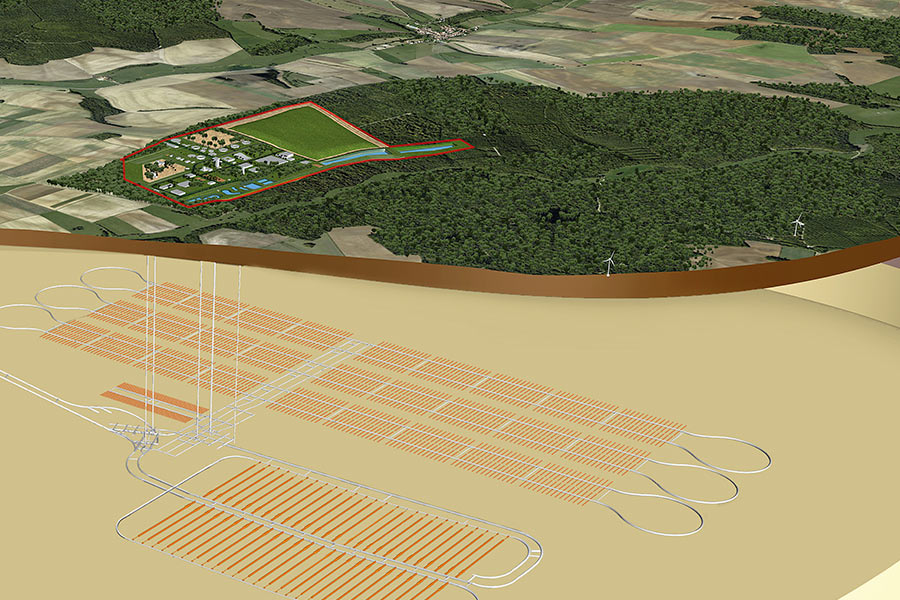Nuclear-based electricity production generates radioactive waste. The most hazardous of this waste cannot be stored in surface or near-surface facilities due to their high radioactivity levels. François, a planning engineer, has been working for the past year on the FD (final design) phase of a new reversible deep storage centre intended to hold waste derived from spent nuclear fuel processing.
A project in the industrial design phase
I am currently working on the FD phase for this nuclear waste burial centre. For geological reasons, it was decided to bury the waste in a homogeneous and very stable geological layer impermeable both to radionuclides and water. For the past 20 years, this geological layer has been studied and tested by a laboratory. It is located at a depth of 500 metres. To move the radioactive nuclear waste from reception to storage in a safe manner for the human operators, some sections will be fully automated, with no human presence.
The project is currently in the industrial design phase. Currently, the main challenges are the technical and political validation, followed by the continuation, construction and operation of this project. Work could start as early as 2021, for a centre opening in pilot phase in 2025, followed by receipt of the initial waste around 2030.
A reversible storage solution
Most of the waste concerned by project CIGEO has already been produced, or corresponds to French nuclear power plants currently in operation. Thus, the role of this project is not to serve as a pretext for the creation of new power plants, but rather a storage solution for existing waste.
As more effective processing technologies may emerge, storage must be reversible. In other words, throughout operation (approximately 100 years), it must be possible to remove and recover the waste in order to process them in a different manner.

Project management expertise
This project is fascinating by its size, diversity and fields of expertise that it involves. In light of its size, the project has been broken down into several different competencies, hence the presence of multiple sub-system project managements overseen by a system project management. In this context, I am in charge of the schedule for one of the sub-system project managements and I generate the contractually required schedule documents. The scope of my work was recently extended as I took on a “system” role. In other words, I now supervise the productions of other sub-systems relative to the first one.
François, planning engineer




